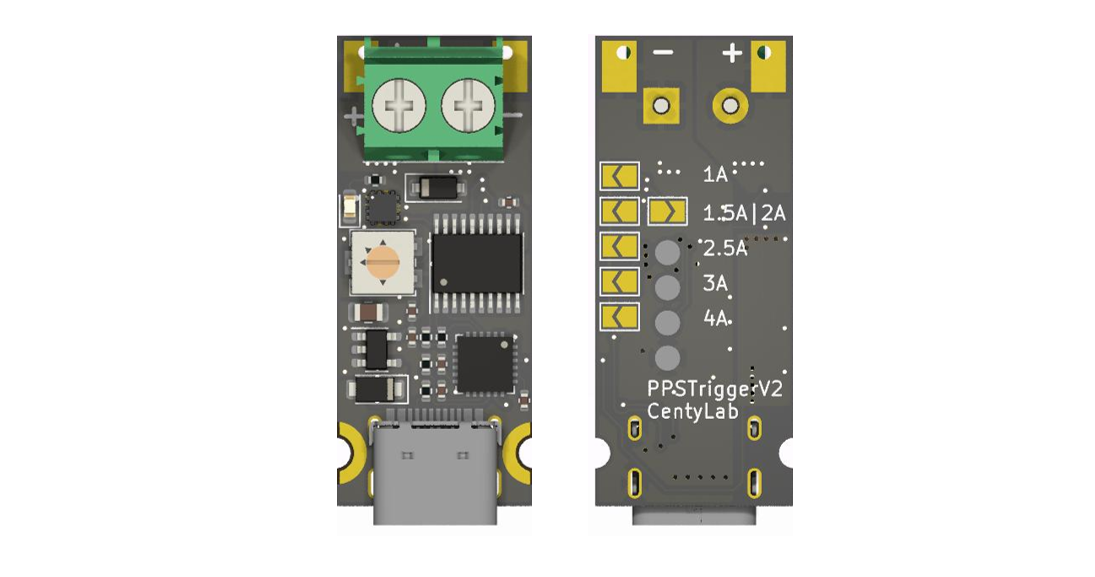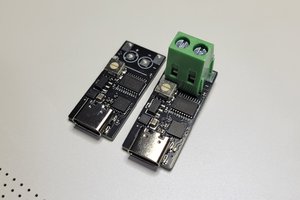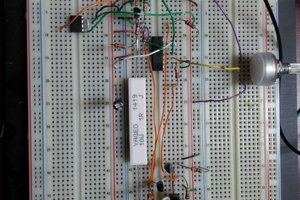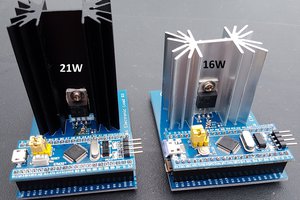
Status
The prototype is under testing for edge cases.
Specification
USB PD+PPS with CV/CC mode, 3.3V to 20V @ 5A continuous. Actual voltage and current output depend on your charger.
Improvement from version 1:
- Constant current mode
- Better overall ESD protection
- Output flyback diode protection
- Reverse current protection
How to use the board
- Default (no jumper): CV mode. Max voltage is set by the potentiometer. Maximum current rated for cable/power supply
- 1A jumper: CC mode at 1A. Max voltage is set by the potentiometer.
- 1.5A jumper: CC mode at 1.5A. Max voltage is set by the potentiometer.
- 2A jumper: CC mode at 2A. Max voltage is set by the potentiometer.
- 2.5A jumper: CC mode at 2.5A. Max voltage is set by the potentiometer.
- 3A jumper: CC mode at 3A. Max voltage is set by the potentiometer.
- 4A: CC mode at 4A. Max voltage is set by the potentiometer.
If the charger doesn't support PPS in CC mode, there will be no output to the screw terminal. CV mode can work with both PPS and non-PPS sources.
**CC: Constant Current Mode
**CV: Constant Voltage Mode
PPS (programable power supply) in PD3.0/PD3.1
Detail specifications for PPS mode can be found at USB Power Delivery 2019 Presentation
Even though the downstream device can request a 50mA current limit step in PPS mode, the lowest settable current limit is 1A. This value is called iPpsCLMin in the specification.
Reverse current protection is not mentioned in the specification. Reverse current can happen when your source voltage is lower than your device voltage, normally your battery (Vsouce < Vbatt), thus allowing current to flow from your battery to your charger. Anker has confirmed that their IQ standard supports reverse current protection, but all manufacturers do not guarantee implementation.
For this, PPSTrigger has also implemented reverse current protection, regardless of your charger implementation. Current only starts to flow when your Vsource > Vbatt.
Dimension

 CentyLab
CentyLab

 Shuo Cao
Shuo Cao
 Marc-O.
Marc-O.
 Jasper Sikken
Jasper Sikken